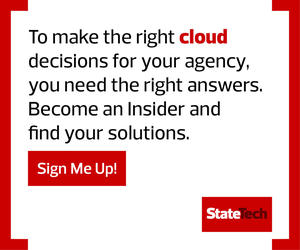iPaaS vs. PaaS
In a world overloaded with buzzwords, IT managers who haven’t seen “iPaaS” as an acronym can be excused for thinking that iPaaS and Platform as a Service are related. In fact, the only relationship is the as-a-service part: They are both services delivered by cloud-based vendors, but have no other similarities or relationship.
iPaaS is much closer to SaaS: a software tool delivered as a service. The difference is that SaaS usually refers to end-user applications, tools such as those from Salesforce and Microsoft 365, while iPaaS is a developer toolkit.
Meanwhile, Platform as a Service enables agencies to develop, run and manage apps without building out the infrastructure they would normally need to do that.
LEARN MORE: What does software-defined everything mean for state governments?
Integration Platform as a Service Examples in Government
The best way to understand how iPaaS works for government agencies is to explore specific use cases. A simple Internet of Things example, traffic cameras, highlights how iPaaS can aid local agencies.
Many local governments have outsourced their traffic camera data management to a third party that takes responsibility for collecting the data, warehousing it in the cloud, making it available for playback or analysis, and running the entire network. A local government’s traffic camera system may be able to generate enforcement events, noting when a certain car ran a red light and capturing that vehicle’s license plate.
iPaaS vendors provide a toolkit that can talk to multiple applications, including the traffic camera system, the local department of motor vehicles, law enforcement and other systems. Rather than asking one vendor or one developer to be responsible for making the links, an iPaaS vendor can take disparate systems with different data types and build the connections. Some iPaaS vendors, for example, including those with artificial intelligence–type capabilities, can make connections where data elements are not going to match all of the time, such as names and addresses.
One important aspect of iPaaS is that the agency that owns the data is fully in control. Agencies don’t have to settle for whatever capabilities and individual integrations the camera vendor is offering; they can build their own integrations. And IT leaders can do so as quickly as they need to, because the IPaaS toolkit is there and designed to be easy to use, with a central management console and a quick overview of how data is shared among applications.












